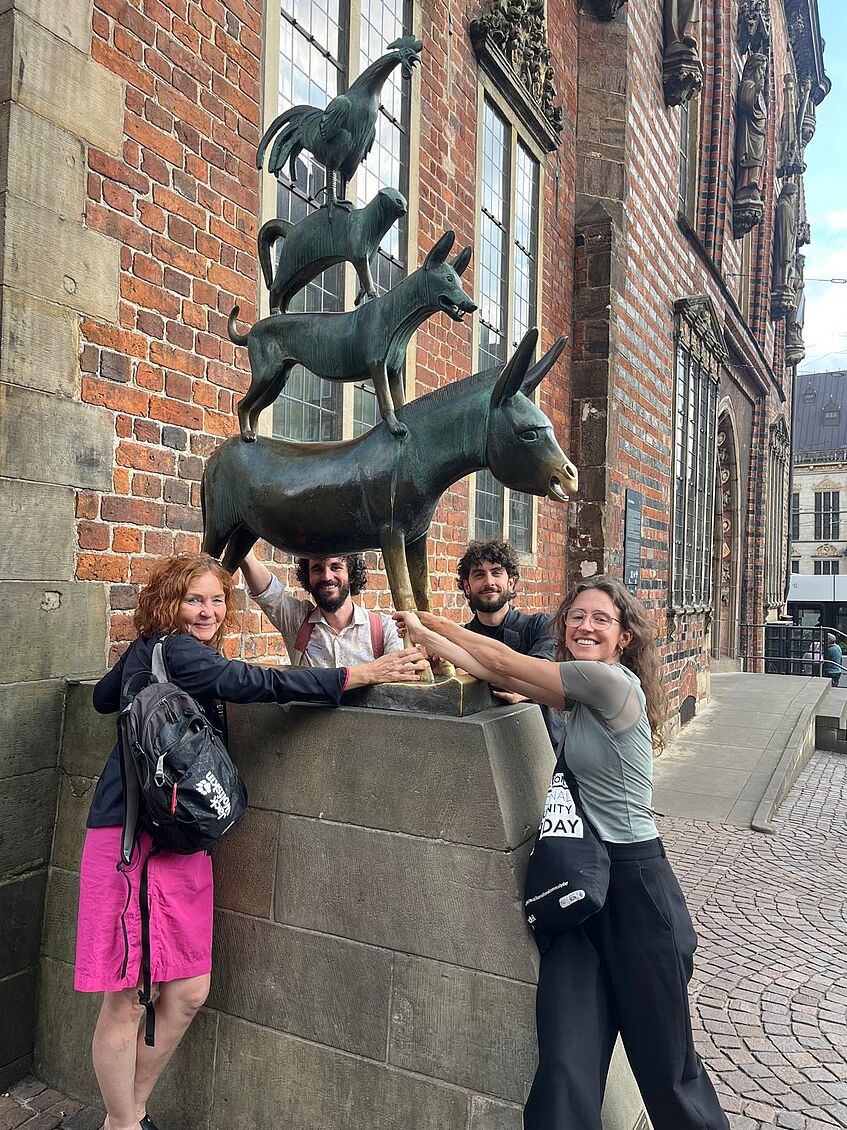The Ammonia oxidation process in Archaea
Stand alone project
Nitrogen is the most abundant element in the earth’s atmosphere, and is essential for all living organisms. The transformation of nitrogen into reactive forms such as ammonia (NH3) or nitrogen oxide (NOx) that can be used by organisms, is mainly carried out by specific groups of microorganisms that are part of the global nitrogen cycle. The development of a chemical process to synthesize ammonia in large scale for use in fertilizers in the turn of the century led to the Green Revolution and massive increase in agricultural production. Due to the low nitrogen use efficiency of plants however, more than half of the nitrogen fertilizer is released into the biosphere, resulting in pollution of ecosystems with dramatic consequences, such as eutrophication of fresh water systems and a large increase in emissions of the potent greenhouse gas N2O.
Given these dramatic ecological impacts of an imbalanced nitrogen cycle, it is very important to study and understand the activity of microorganisms involved, and especially those that carry out the oxidation of ammonia to nitrite, which is the step that controls the availability of reactive nitrogen species in the environment. Of the two microbial groups performing the process, ammonia oxidizing bacteria (AOB) and ammonia oxidizing archaea (AOA), the latter have been consistently found to outnumber their bacterial counterparts in most environments, even though they were only discovered about 15 years ago.
Progress in understanding the physiology and metabolic diversity of AOA has been slow, mostly due to technical challenges in cultivating the organisms to high enough biomass. In consequence, very little is known about their central energy metabolism, including the structure of the key enzyme ammonia monooxygenase and the nature of the enzymes that catalyze the rest of the pathway. Recent progress in our laboratory however, in particular involving the controlled fermentation and optimization of AOA growth in continuous cultures enables us to produce up to three gram of biomass per month regularly. This development allows now for more detailed functional genomics, genetics and biochemical studies. Specifically, we will attempt to elucidate the structure-function relationships of the key enzyme, ammonia monooxygenase by Cryo Electron Microscopy and biochemical analyses, and perform comparative studies of various AOA in order to identify further enzymes in the pathway.
This study will ultimately enable us to develop a more in-depth picture of the ammonia oxidation in AOA, one of the most widespread and abundant, but very little studied microbial groups on this planet.
Duration: 01.03.2023-28.02.2027
Funding agency: Austrian Science Fund (FWF): P 36287
Project leader: Christa Schleper
Participants: Thomas Pribasnig, Maximilian Dreer, Marina Monserrat

Related papers
The Ammonia oxidation process in Archaea
Hodgskiss LH, Melcher M, Kerou M, Chen W, Ponce-Toledo RI, Savvides SN, Wienkoop S, Hartl M, Schleper C. (2023). Unexpected complexity of the ammonia monooxygenase in archaea. ISME Journal 17(4):588-599. doi: 10.1038/s41396-023-01367-3. Erratum in: ISME J. 2023 Apr 28;: PMID: 36721060; PMCID: PMC10030591.
Melcher M, Hodgskiss LH, Mardini MA, Schleper C, Rittmann SKR. (2023) Analysis of biomass productivity and physiology of Nitrososphaera viennensis grown in continuous culture. Frontiers in Microbiology 14:1076342. doi: 10.3389/fmicb.2023.1076342.- Mooshammer M, Alves RJE, Bayer B, Melcher M, Stieglmeier M, Jochum L, Rittmann SKR, Watzka M, Schleper C, Herndl G, Wanek W (2020) Nitrogen Isotope Fractionation During Archaeal Ammonia Oxidation: Coupled Estimates from Measurements of Residual Ammonium and Accumulated Nitrite. Frontiers in Microbiology 11: 1710. DOI: 10.3389/fmicb.202
- Reyes C, Hodgskiss L, Kerou M, Pribasnig T, Abby SS, Bayer B, Kraemer S, Schleper C (2020) Genome wide transcriptomic analysis of the soil ammonia oxidizing archaeon Nitrososphaera viennensis upon exposure to copper limitation. The ISME Journal 14(11): 2659-2674. DOI: 10.1038/s41396-020-0715-2.
- Alves RJE, Kerou M, Zappe A, Bittner R, Abby SS, Schmidt HA, Pfeifer K, Schleper C (2019) Ammonia Oxidation by the arctic terrestrial Thaumarchaeote Candidatus Nitrosocosmicus arcticus Is stimulated by increasing temperatures. Frontiers in Microbiology 10: 1571. DOI: 10.3389/fmicb.2019.01571.
- Abby SS, Melcher M, Kerou M, Krupovic M, Stieglmeier M, Rossel C, Schleper C (2018) Candidatus Nitrosocaldus cavascurensis, an Ammonia Oxidizing, Extremely Thermophilic Archaeon with a Highly Mobile Genome. Frontiers in Microbiology 9: 28. DOI: 10.3389/fmicb.2018.00028
- Jung M-Y, Kim J-G, Damste JS, Rijpstra WIC, Madsen EL, Kim S-J, Hong H, Si O-J, Kerou M, Schleper C, Rhee S-K (2016) A hydrophobic ammonia-oxidizing archaeon of the Nitrosocosmicus clade isolated from coal tar-contaminated sediment. Environmental Microbiology Reports 8(6): 983-992. DOI: 10.1111/1758-2229.12477
- Kerou M, Offre P, Valledor L, Abby S, Melcher M, Nagler M, Weckwerth W, Schleper C (2016) Proteomics and comparative genomics of Nitrososphaera viennensis reveal the core genome and adaptations of archaeal ammonia oxidizers. Proceedings of the National Academy of Sciences of the United States of America 113(49): E7937-E7946. DOI: 10.1073/pnas.1601212113
- Kozlowski JA, Stieglmeier M, Schleper C, Klotz MG, Stein LY (2016) Pathways and key intermediates required for obligate aerobic ammonia-dependent chemolithotrophy in bacteria and Thaumarchaeota. ISME Journal 10(8): 1836-1845. DOI: 10.1038/ismej.2016.2
- Stieglmeier M, Alves R, Schleper C (2014) The Phylum Thaumarchaeota. In: The Prokaryotes -Other Major Lineages of Bacteria and The Archaea. Rosenberg, E., DeLong E.F., Lory, S., Stackebrandt, E., Thompson F. (Eds.) 4th ed. 2014 Springer-Verlag Berlin Heidelberg. DOI: 10.1007/978-3-642-38954-2_338.
- Stieglmeier M, Klingl A, Alves RJ, Rittmann SK, Melcher M, Leisch N, Schleper C (2014) Nitrosophaera viennensis sp. nov., an aerobic and mesophilic ammonia-oxidizing archaeon from soil and member of the archaeal phylum Thaumarchaeota. International Journal of Systematic and Evolutionary Microbiology 64(Pt 8): 2738-2752. DOI: 10.1099/ijs.0.063172-0
- Tourna M, Stieglmeier M, Spang A, Könneke M, Schintlmeister A, Urich T, Engel M, Schloter M, Wagner M, Richter A, Schleper C (2011) Nitrososphaera viennensis, an ammonia oxidizing archaeon from soil. Proceedings of the National Academy of Sciences of the United States of America 108(20): 8420-8425. DOI: 10.1073/pnas.1013488108
- Schleper C (2010) Ammonia oxidation: different niches for bacteria and archaea? ISME Journal 4(9): 1092-1094. DOI: 10.1038/ismej.2010.111
- Schleper C, Nicol GW (2010) Ammonia-oxidising archaea-physiology, ecology and evolution. Advances in Microbial Physiology 57: 1-47. DOI: 10.1016/B978-0-12-381045-8.00001-1



